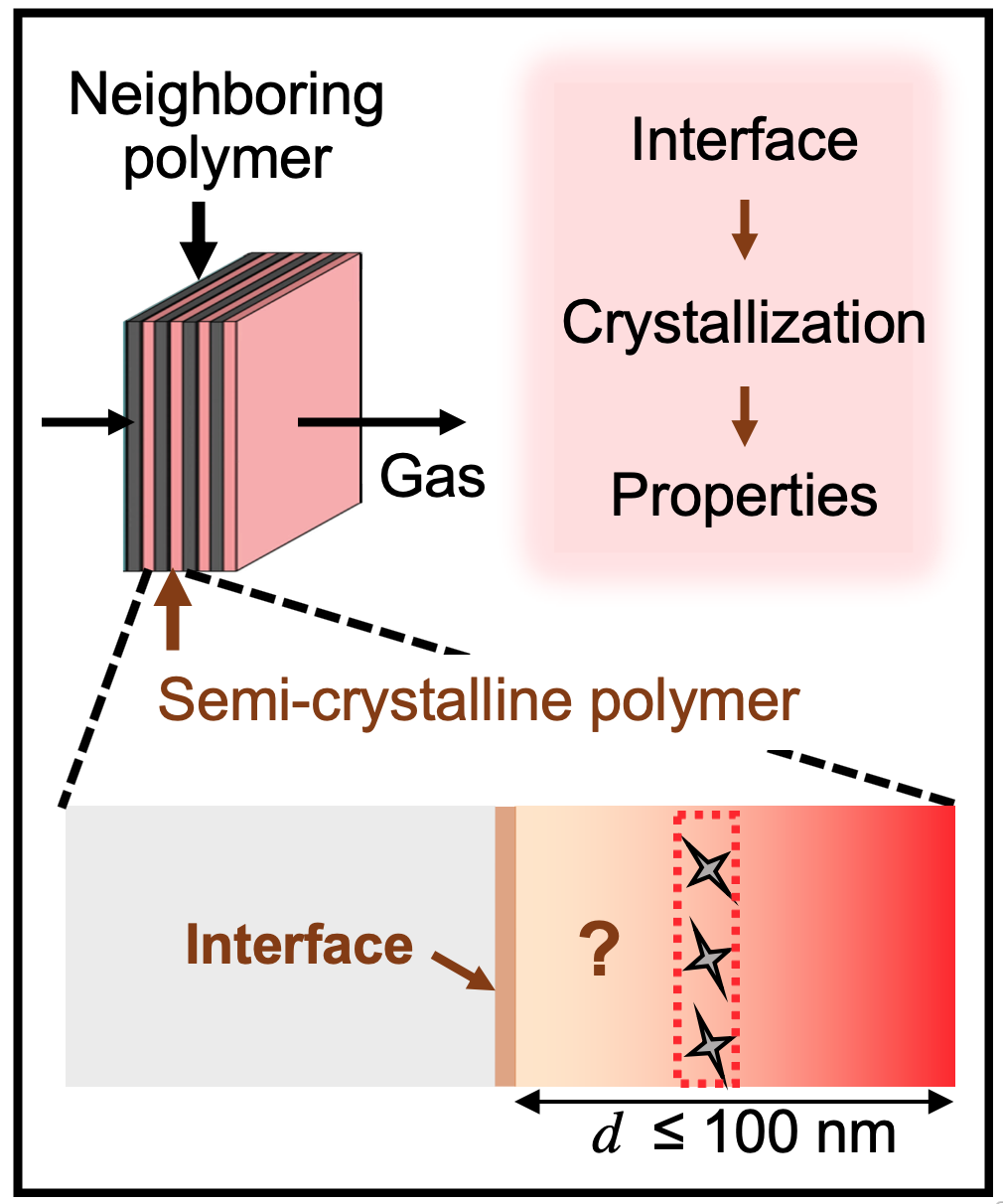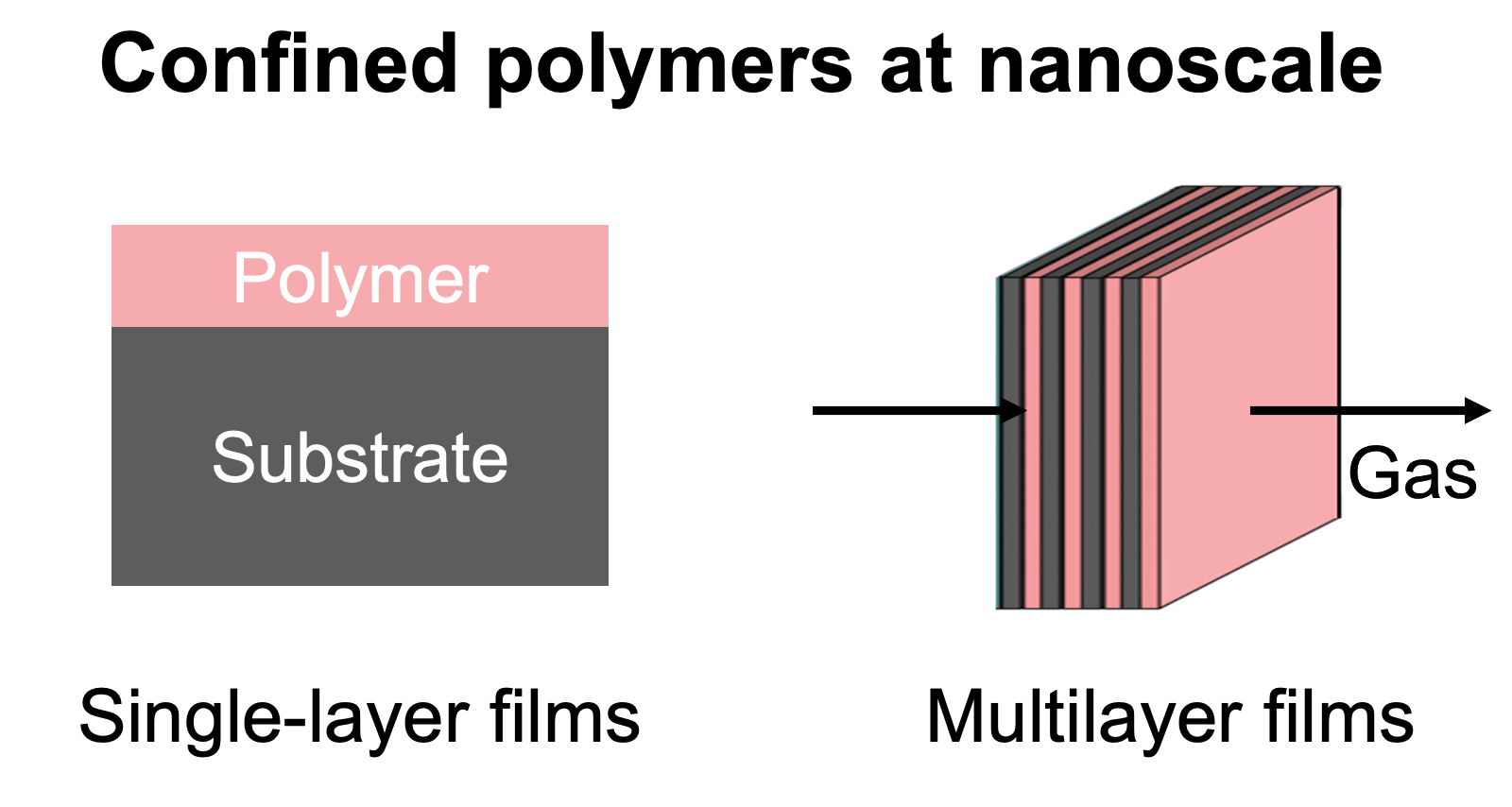The behavior of polymers (e.g., crystallization behavior of semi-crystalline polymers) near interfaces can be significantly different from their bulk behavior, and this effect is more prominent when polymers are confined to the nanoscale. Understanding the impact of interfaces on the crystallization behavior (e.g., crystallization kinetics and crystal orientation) is essential for the development of nanostructured polymeric materials with desired crystalline structures and macroscopic properties. For example, the gas barrier properties of multi-nanolayered polymer films can be enhanced by orders of magnitude when lamellar crystals are aligned normal to the direction of gas diffusion. However, it has been historically challenging to directly probe the polymer crystallization near interfaces due to the lack of experimental techniques that can access specific locations of interest at nanoscale.
To address this challenge, our group is currently developing a location-specific fluorescence technique to directly probe local polymer crystallization at prescribed distances away from the interface (figure on the right). The key here is to place a trace level of appropriate “reporter” fluorescent luminogens that show sensitivity to crystallization at a controlled distance from the interface within the nanostructured multilayer films. Collective fluorescence measurements at different locations can lead to a complete mapping of the crystallization rate distribution, providing direct information on the role of interfaces in influencing the local crystallization kinetics, which in turn dictates the crystalline structures and the macroscopic properties. This contact-free fluorescence technique could also allow us to probe polymer crystallization in situ during rheological or mechanical testing, providing unprecedented information on strain-induced crystallization. Overall, this research can reveal guidelines on how to properly process and engineer nanostructured polymer films to maximize their performance.

Polymers of our primary interest are semi-crystalline, biodegradable polymers. Ultimately, insight from these studies would lead to sustainable plastic packaging materials that are essential in transforming the polluting packaging industry (which accounts for ~40% of the global plastic production) today into an environmentally friendly economy tomorrow.
Experiments involved in this research include synthesizing dye-labeled and unlabeled polymers, preparing nanostructured polymer films via spin coating, probing crystallization rate distribution using fluorescence spectroscopy, characterizing the final properties of the resulting materials (e.g., crystal structure, morphology, and mechanical properties characterized using X-ray diffraction, atomic force microscopy, and tensile tests, respectively), and evaluating their gas barrier performance.


